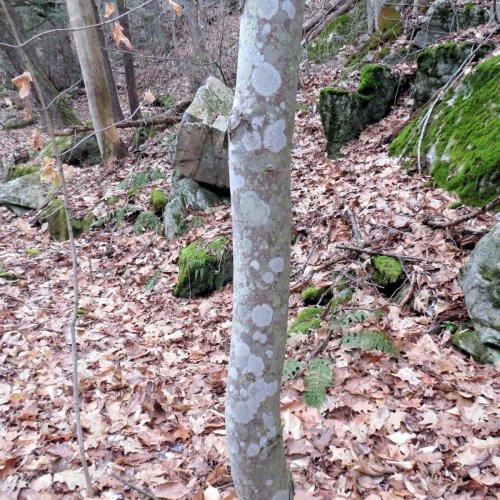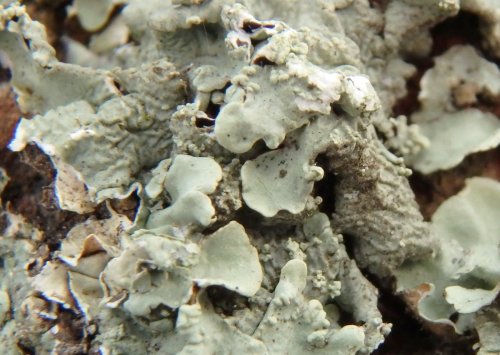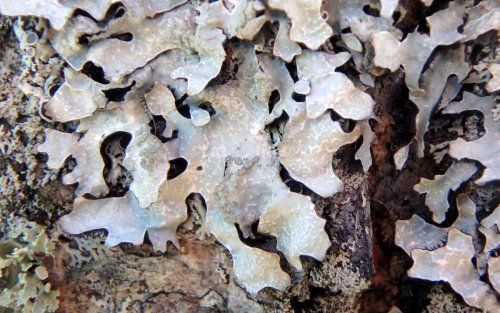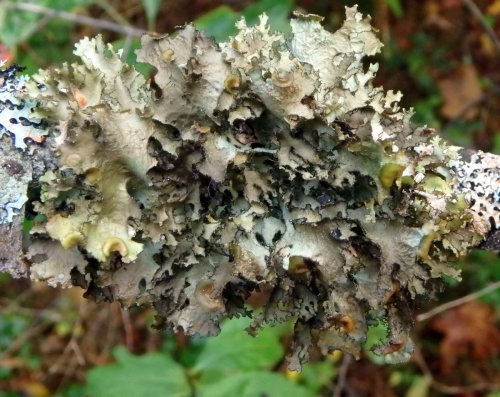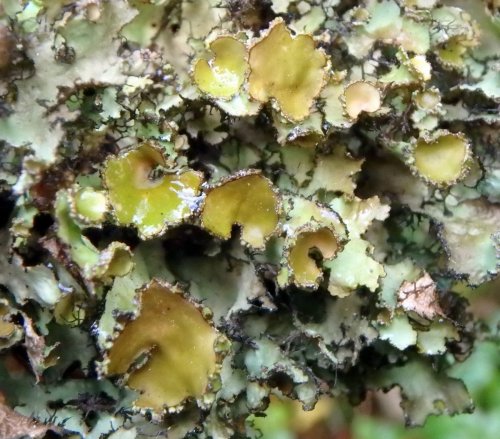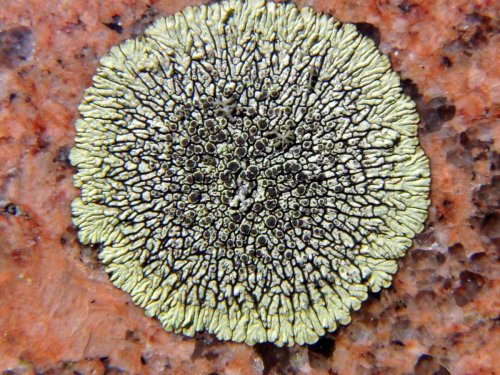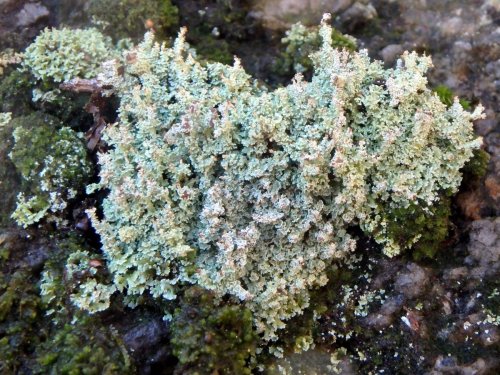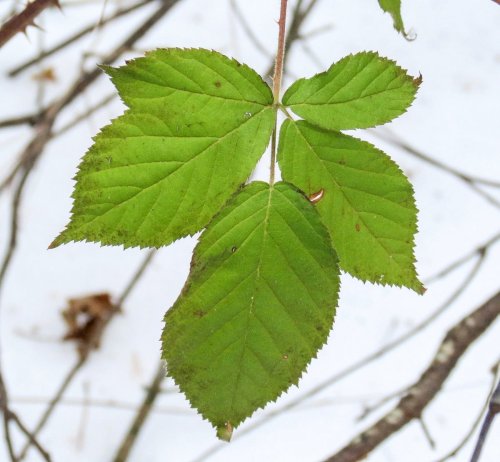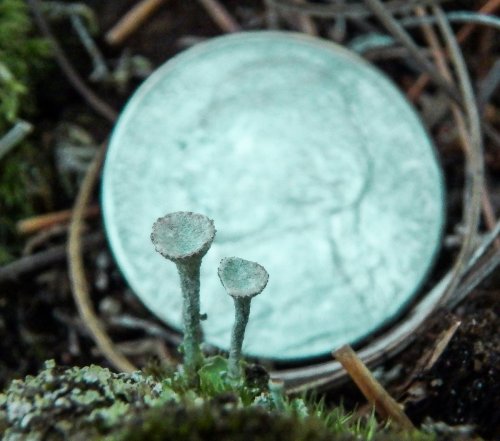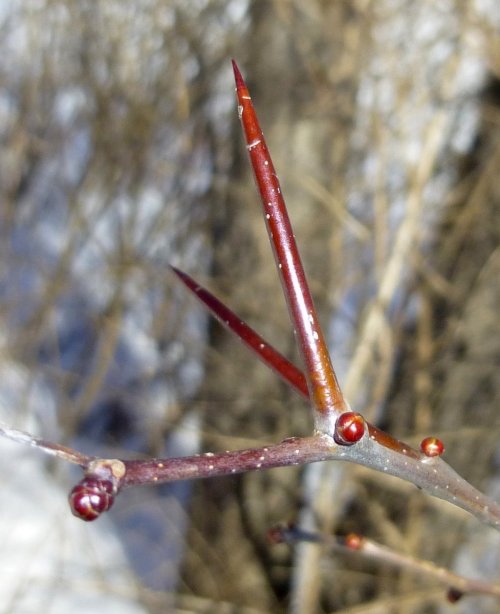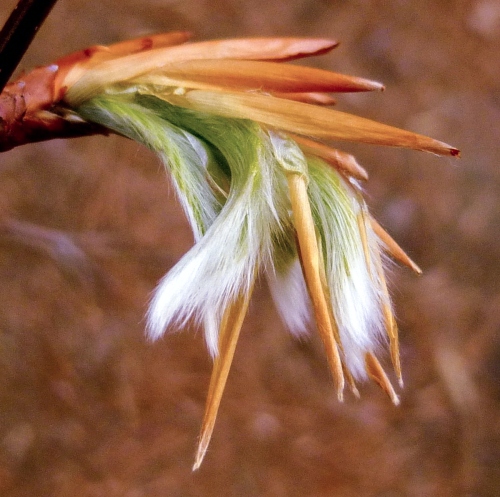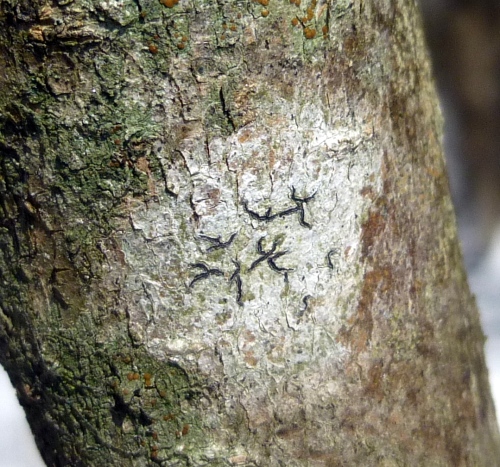Posts Tagged ‘Fishbone Beard Lichen’
Lichens
Posted in Lichens, Nature, tagged Bristly Beard Lichen, British Soldier Lichen, Canon EOS Rebel T6, Common Goldspeck Lichen, Common Greenshield Lichen, Common Script Lichen, Cumberland Rock Shield Lichen, Fishbone Beard Lichen, Hammered Shield Lichen, Keene, Lichens, Native Plants, Nature, New Hampshire, NH, Olympus Stylus TG-870, Pebbled Pixie Cup Lichen, Poplar Sunburst Lichen, Sidewalk Firedot Lichen, Smokey Eye Boulder Lichen, Star Rosette Lichen, Swanzey New Hampshire, Tufted Ramalina Lichen on November 20, 2019| 32 Comments »
Lichens
Posted in Lichens, Nature, tagged Bottlebrush Shield Lichen, Canon SX40 HS, Common Script Lichen, Concentric Boulder Lichen, Fishbone Beard Lichen, Fringed Wrinkle Lichen, Frosted Comma Lichen, Golden Moon, Green Shield Lichen, Hammered Shield Lichen, Keene, Lichens, Native Plants, Nature, New Hampshire, NH, Olympus Stylus TG-870, Swanzey New Hampshire, Winter Hiking, Winter Plants, Winter Woods on January 6, 2018| 42 Comments »
This post was supposed to be part 2 of a lichen post I did back on November 29 but I’ve dilly dallied so long it would probably be hard for all of us to remember what was in that one, so I’ll just start anew. I do these lichen posts because people seem to be mystified by lichens and afraid they won’t be able to identify them. I’ll be the first to admit that identifying lichens isn’t easy, but I try to show lichens that are easier to identify than other species in the hope that you’ll give them a try. Often times when I go hunting lichens I start with a smooth barked tree like that in the above photo. As you can see it’s absolutely peppered with them and I can tell without even zooming in that there are at least 3 different lichens in that photo.
One of the lichens on that tree was this script lichen. Script lichens are easy to identify as such but breaking them down into species can be difficult. I think this one is the common script lichen (Graphis scripta.) Script lichens seem to be fussy about what kind of trees they grow on and the common script lichen prefers trees with smooth bark, like maple or beech.
The script lichen’s common name comes from its apothecia, which are its fruiting bodies where its spores are produced. They look like ancient runes that someone has scratched into the body of the lichen (Thallus.) Some appear as horizontal lines, some can be vertical or angular but most appear random like those in the photo. Some, like the asterisk lichen can be very beautiful but even though I’ve searched for an example for many years I’ve never seen one.
This script lichen had a very dark thallus and isn’t like any other that I’ve seen. I’m not sure what would make it so dark, but it might have been the cold. I’ve seen cold change the color of other lichens from gray to blue. From what I’ve seen of script lichens the body of the lichen is there year round, but only when it starts to get cold in the fall do the fruiting bodies appear. Many lichens choose to produce their spores in the winter and I’ve never been able to find out why.
One of the most common lichens seen on trees in this region is the common green shield lichen (Flavoparmelia caperata.) They are large, leafy, round or oval lichens that are kind of a yellow green color, and colonies of them can cover nearly the entire trunk of a tree. They are usually very wrinkled and in fact the caperata part of the scientific name means wrinkled.
Seeing fruiting bodies (Apothecia) on green shield lichens is rare in my experience but they always seem to have abundant soredia, which are tiny, powdery vegetative reproductive bodies that can be carried off by the wind or rain to form new lichens. The soredia form on the body (Thallus) of the lichen in pustule like areas called soralia. They are very similar to other vegetative reproductive growths called isidia, which are stalked growths on the thallus. Some Native American tribes dried and crushed this lichen into a powder and used it to treat burns.
Bottlebrush shield lichen (Parmelia squarrosa) is very common but is also easily passed by because it often grows quite small and I find that its pale gray color blends well with the color of the bark of the trees that it grows on, like smooth barked maples. You can just see small shiny spherical dots on a few of its lobes in this photo. These are granular vegetative reproductive structures called isidia. When a squirrel runs up a tree and breaks these granular parts of it off, the broken parts will start new lichens. Lichens books say that fruiting bodies (Apothecia) are common on this lichen but I’ve never seen them.
The bottlebrush part of this lichen’s common name comes from its dense, dark mat of rhizines on its undersides. These rhizines can be thought of as tiny rootlets which help anchor the lichen to the bark of trees. When they are branched like a bottle brush they are said to be squarrose. This lichen will also grow on mossy rocks and likes shaded, humid places.
Yet another shield lichen usually found on trees is the hammered shield lichen (Parmelia sulcata.) Its common name comes from the way its network of sharp ridges and depressions makes it look like it has been hammered out of a sheet of steel. Fruiting bodies are said to be rare on this lichen, which explains why I’ve never seen them. Instead it relies on powdery, whitish soredia to reproduce. It also has rhizines like the bottlebrush shield, but they don’t seem as bushy and noticeable. Hammered shield lichens are relatively small and though the book Lichens of North America says they can even be weedy, I don’t see them very often.
It’s very common to be walking through the woods and find twigs and branches with large, leafy (Foliose) lichens like the one pictured growing on them. These lichens can be difficult to identify because they change color drastically when they dry out. Though this one appears on the gray side its normal color when wet would be a deep, olive brown. I think this one is in the Tuckermannopsis group, probably the fringed wrinkle lichen (Tuckermannopsis ciliaris.) Lichens in this group often have “wrinkled” in their common name because that’s the way they look. They’re very pretty and easy to see and I often find them on birch and white pine branches.
Fruiting bodies (Apothecia) are common on the fringed wrinkle lichen. They are also quite large and easily seen; shiny and brownish green. Tiny bead like structures called pycnidia line the margins of the apothecia. They are yet another type of vegetative reproductive structure that will form new lichens if they break off. This lichen or family of lichens is very common and I see them almost every time I go into the woods.
There are many beard lichens and many are abundant in this region, but one that I don’t see quite as often as others is the fishbone beard lichen (Usnea filipendula.) It grows high in the treetops and when I find it it’s almost always on a fallen branch, as this one was.
The fishbone beard lichen gets its common name not surprisingly, from its resemblance to the skeleton of a fish. Lichens in this genus contain usnic acid and have strong antiseptic and antibiotic properties. They’ve been used medicinally since ancient times throughout the world to stop bleeding and heal wounds, and also against lung and fungal infections. Native Americans moistened the lichens and used them as a poultice for boils and wounds. Beard lichens are still used today in antiseptic skin creams, deodorants, and mouth washes. It is said that about 50% of lichen species have antibiotic properties and research to develop medicines from them is ongoing worldwide.
Man isn’t the only one who uses lichens. This bird’s nest had many beard lichens woven into it. One study that I read about said that 5 different species of lichen were found in just a tiny hummingbird’s nest.
Concentric boulder lichen (Porpidia crustulata) gets its name from the way its black apothecia grow in concentric (or nearly so) rings around their center. The gray body of the lichen forms a crust on stone and that makes it a crustose lichen. This lichen is relatively rare here and I only see them once in a blue moon. They grow in sun or shade and don’t ever seem to change color.
Another shield lichen that’s very common in this area is the peppered rock shield (Xanthoparmelia conspersa.) It grows on stone in full sun and I usually find it on old stone walls. It’s a big lichen, often 10 inches or more across, that seems to be almost always fruiting, with crinkly brown fruiting bodies (Apothecia.) Though it must produce an abundance of spores this lichen also reproduces vegetatively, again by the granular vegetative reproductive structures called isidia, like the bottlebrush shield lichen we saw earlier. When bits of the lichen are broken off the isidia increase its chances of starting a new colony. Isidia also increase photosynthetic efficiency.
Here is a closer look at the peppered rock shield’s apothecia. They are big enough to see without any magnification and are an orangey brown color. You can also see bits of the insidia. It’s clear that this lichen is all about continuation of the species and it does well at it. One stone wall I know of has them on almost every stone in the wall.
The golden moonglow lichens (Dimelaena oreina) that I see are usually about an inch across but they can get much bigger. They grow in full sun on granite and don’t seem to change color when they dry out like many other lichens do. The one in the photo was producing spores and that’s something I don’t see this lichen do very often. If you spend much time in cemeteries you have probably seen this pretty lichen, because it seems to like growing on smooth, polished stone. It is a crustose lichen, so removing it from any kind of stone would be a challenge. When lichens grow on glass the acids in them can actually etch the glass and this is a problem in the big European cathedrals, especially.
Rock foam lichens (Stereocaulon saxatile) grow directly on stone in full sun. When dry this lichen is very stiff and brushy and almost seems as if it would cut you but caribou will eat it when they can’t find reindeer lichens. This lichen is often used by prospectors because a simple lab test on it will show what type of stone it was growing on and what minerals, like copper for instance, are in the stone.
Lichens, as I hope these lichen posts have shown, can be very beautiful, and one of the prettiest I’ve seen lately is the frosted comma lichen (Arthonia caesia.) Its blue gray apothecia against a yellowish gray body make it easy to identify but you have to look closely to see these features. This one was no more than a half inch across and the blue apothecia were about the size of a period made by a pencil on paper. I hope you’ll take the time to look for it and other lichens on your next nature walk. They can be found virtually anywhere at any season, and are always interesting and often beautiful.
We keep seeing things all our life, yet seldom do we notice them. ~Avijeet Das
Thanks for stopping in.
Tales From The Wood (Pile)
Posted in Fungi, Nature, Things I've Seen, tagged Amber Jelly Fungus, Black Jelly Drop Fungus, Brown Jelly Cup Fungus, Canon SX40 HS, Carpenter Ant Damage on Tree, Cobalt Crust Fungus, Cutting wood, Fall Fungi, Fishbone Beard Lichen, Hairy Stereum Fungus, Iron Staining on Log, Keene, Lichens, Moss on Trees, Mushrooms, Native Plants, Nature, New Hampshire, NH, Olympus Stylus TG-870, Wild Mushrooms, Witch's Butter, Woodpecker Holes in Tree, Woodpile, Wrinkled Crust Fungus on November 8, 2017| 35 Comments »
We burn a lot of wood here in New Hampshire because with 4.8 million acres of forest it is plentiful and usually costs less than oil heat. One of the things I like about burning wood is the handling of it. Cutting, splitting and stacking means you have to handle each piece a few times, and when you do you notice things that you might have never seen while the tree was standing. The following photos are of the various things I found in this woodpile.
Black jelly drop fungi (Bulgaria inquinans) grew on an oak log. They are also called poor man’s licorice but they aren’t edible. They look and feel like black gumdrops, and for some unknown reason are almost always found on oak trees that have been felled and cut up for firewood.
Though they look like jelly fungi black jelly drops are sac fungi. Their fertile, spore bearing surface is shiny and the outside of the cups look like brown velvet. They are sometimes used for dying fabric in blacks, browns, purples and grays.
This is an example of a true jelly fungus, which is little more than a bag of water that inflates to about 60 times its dry size when it rains. If it was dry this amber jelly fungus (Exidia recisa) would be just a dark flake on the tree’s bark. After absorbing plenty of rainwater this example was about as big as an average adult fingernail. Jelly fungi feel cool to the touch and kind of rubbery, like your ear lobe. Their spores are produced on their shiny surfaces. If you look closely at them you can see that one side is shiny and the other has more of a matte finish. I find these on oak more than other species, but sometimes on poplar and alder as well.
This brown jelly cup fungus (Peziza repanda) looked a little tattered and dirty but it’s a good example of the variety of fungi you can find on cut logs. Though it is called a jelly cup it is a sac fungus and different Peziza species can grow on wood, soil, or dung. This example is a cool weather mushroom that grows on hardwood logs or wood chips, and it is usually seen in spring and fall. Mushroom expert Michael Kuo says brown cup fungi can be very difficult to identify.
Hairy Stereum (Stereum hirsutsm) is also called the hairy curtain crust fungus. The common name comes from the way these fungi are covered with fine velvety hairs on their upper surface when they’re young. They like to grow on fallen hardwoods and can be found just about any time of year. The color can vary but the wavy edge helps identify them. These examples were very young.
Witch’s butter on a log in a woodpile might alert you to the fact that you’ve got some soft wood mixed in with your hardwood, because this fungus usually grows on hemlock logs. You can burn soft woods like hemlock but they burn faster and don’t heat quite like hardwoods. They can also cause a lot of creosote buildup in a chimney.
Many of the logs shown in the first shot in this post were dragged. It’s a common practice to have to drag cut trees out of a forest to a landing so they can be cut into manageable pieces and loaded onto logging trucks, and when this one was dragged a woodpecker hole became filled with soil. This is a good time to mention that nearly every log shown in this post came from a tree that had something wrong with it. Woodpeckers dig holes in tree trunks to get at insects living in the tree; often carpenter ants. The ants eat the cellulose and weaken the tree, and it isn’t that unusual to find that the tree you’ve cut is completely hollow.
This example was hollowed out either by insects or heart rot cause by a fungus. Mushrooms and other fungi growing on trees is never a good sign. All of this weakens the tree and when a good wind comes along, down they go. Friends of mine just lost their barn to a hundred + year old pine tree that fell and cut the barn right in half. The tree people estimated its weight at 20 tons. That’s 40,000 pounds of wood, and we’re all very thankful that we weren’t anywhere near it when it fell. It was hollow, just like the one in the photo. It was also full of big, black carpenter ants.
This tree had a double whammy. The channels were caused by insects, probably carpenter ants, and then fungal spores got in and revealed themselves when they fruited into these little white mushrooms. It’s possible that the insects in the tree were farming this mushroom and brought parts of it into their channels to feed on. In any event this tree’s life was shortened by quite a few years. It could have stood hollow and lived on for a long time but heaven help anyone who was near it when it finally came down.
A woodpecker made two holes in this oak tree, one above the other, and as the tree tried to heal itself the holes became spoon shaped. It’s another example of what was a standing hollow tree.
Everyone knows that moss grows on trees but what everyone might not know is that many trees like this oak have channels in their bark which direct rainwater down to the tree’s roots. They can be clearly seen in this example, and so can the moss growing right beside and between them. Mosses like a lot of water and when they grow on a tree trunk they get it by growing next to these vertical streams. Do they grow on the north side of trees? Yes, and on the east, west, and south sides too; whichever is more moist.
Lichens are a common sight in woodpiles and beard lichens are very common. Often you can see them growing all up and down the trunks of trees and much like mosses, lichens grow near the channels in the bark so they can get ample moisture. I think this example is a fishbone beard lichen (Usnea filipendula,) so called because of its resemblance to the backbone of a fish. Many people seem to think that lichens will kill a tree but they are simply opportunists looking for all the rain and sunlight they can get and they just perch on trees like birds do. They take nothing from the tree, so if I pulled this one off this log and put it on a living tree it would just grow on as if nothing ever happened as long as it received the right amount of moisture and light. Lichens are virtually indestructible and that’s why some scientists say they are immortal, or as close to immortal as any living thing can be.
I think this is the start of a beautiful crust fungus called the wrinkled crust (Phlebia radiata.) These mushrooms lie flat on the wood they grow on and have no stem, gills or pores. They radiate out from a central point and can be very beautiful. The darker area on this example is where it was wet and the lighter ones where it was dry. They don’t mind cool weather; I usually find them at this time of year and I’m hoping I’ll find a few more.
I’m not a logger or an arborist so I don’t know why this log has such a dark ring just under its bark. I zoomed in on the photo and counted the rings and found that the dark ring started about 12-14 years ago. Something must have happened back then to cause the change, but I can’t guess what it was.
I do know what caused the purple staining in this log; iron, meaning it has foreign objects like screws or nails in it. Sawmills look for this kind of thing when logging trucks bring in a load of logs and they’ll reject the whole load if they see it.
Here’s an example of a foreign object embedded in a tree. In a few more years the tree would have grown over it and it never would have been seen. The only thing that would have given it away was the purple staining when the tree was cat. Nothing will destroy a saw blade or chain quicker than something like this.
If all the stars and planets are aligned perfectly and you pay close attention to your wood pile you could find something as rare and beautiful as this cobalt crust fungus (Terana caerulea) in it. This photo was taken about three years ago and I’ve been looking for this beautiful fungus ever since, but have never seen another one. This is just the time of year for it to appear, so I’ll be watching for it.
The old saying, as I’ve always heard it, says that firewood warms you three times; once when you cut it, once when you stack it, and once when you burn it, and I’d have to say that was just about right. If you dress in layers against the cold you’ll find yourself peeling them off in a hurry once you get to the wood pile. I’ve always looked at cutting and splitting wood as an enjoyable job though, and I hope this post might make the job of getting your woodshed filled just a little more enjoyable too.
The knots in the wood can’t be untied. ~Marty Rubin
Thanks for coming by.
A Slippery Walk Through Yale Forest
Posted in Nature, Scenery / Landscapes, tagged Beaver Dam, Beaver Pond, Canon SX40 HS, Crispy Tuft Moss, Fishbone Beard Lichen, Native Plants, Nature, Netted Crust Fungus, New Hampshire, NH, Olympus Stylus TG-870, Pixie Cup Lichen, Silver Maple, Star Rosette Lichen, Stone Walls, Swanzey New Hampshire, Wild Mushrooms, Winter Hiking, Winter Plants, Winter Woods, Yale Forest on February 1, 2017| 30 Comments »
I wanted to go for a climb last weekend but we’d had a storm that dropped sleet, snow, rain and freezing rain and now the snow is covered in a coat of ice. I had to wear Yaktrax to walk on the old abandoned road through Yale Forest, even though it’s flat and level. What looks like snow here is actually a thick coating of ice on top of the snow, and it was slippery.
This tree stump tells the story.
An evergreen fern was trapped in the snow and ice. It will probably stay that way for a while because every day this week is supposed to be below freezing.
Yale forest is a forest full of young trees, cut and cut again since the 1700s. Once farm land, it is now owned by the Yale University School of Forestry. A forestry school can’t train foresters in proper forest management without a forest, so this is one of the places where they come to train, and part of that training includes how to maintain healthy woodlands. This parcel is mostly red and white pine that was planted or seeded naturally after the hurricane of 1938 blew down many of the trees that stood here, so none of it is original old growth forest.
Evidence of the original use of the land after settlers moved in can be seen in the rusty barbed wire still attached to this big old tree stump. This is hilly, rocky land so it was most likely used for sheep pasture.
The stone walls here are tossed or thrown walls, which is a sign that the farmer wanted to clear the land as quickly as possible. Stones were literally thrown on top of one another without a thought or care about how the wall looked. When you had to grow what you were eating clearing the land quickly was far more important than having a nice looking wall.
Up ahead a tree had fallen across the old road but there was no reason to worry; this road hasn’t seen traffic for quite a while. It was once called Dartmouth College Road because if you followed in north far enough, that’s where you would have ended up. When the State Department of Transportation built what is now route 10 this section of road was abandoned and from what I gather by talking to the county forester and others, was taken over by Yale University. It is now considered a private road but Yale University is very good about letting locals use the forest for hiking and biking.
The fallen tree had broken off about 8 feet above the ground and the break was relatively fresh. Its brother on the left had previously broken in almost the same place.
Dried fungi on the trunk spoke of why the tree had fallen. Fungi are a sign of rot in a tree and many can cause rot. Rot makes trees unable to withstand strong winds, and we’ve had a few windy days recently.
I always like to look over the branches in the crowns of fallen trees to see what was growing up so high. This tree had a lot of small, rounded mounds of crispy tuft moss (Ulota crispa) on its limbs. It’s tightly curled and contorted leaves meant that it was dry. It almost always grows on tree trunks where there is no standing water. Studies have shown that moss spores stick to the paws of chipmunks and squirrels, and that explains how they get their start so high up in trees. Chances are good that lichen and fungus spores are transported in the same way, I would think.
This is a closer look at the crispy tuft moss and its curled leaves, spent spore capsules and new growth. I love how the spore capsules look like tiny Tiffany vases. This comes from their being constricted just below the mouth of the capsule.
Fishbone beard lichen is common on trees and even wooden fences, so I wasn’t surprised to see it here. There are many different kinds of beard lichens and the differences can be subtle, but the fishbone beard lichen (Usnea filipendula) stands apart because of its resemblance to the backbone of a fish. This lichen seems to prefer growing on spruce but I’ve seen it on other trees as well. Though it isn’t rare I don’t see it frequently. Lichens in the Usnea genus contain usnic acid and have antiseptic / antibiotic properties. They have been used since ancient times throughout the world to heal wounds.
Netted crust fungi (Byssomerulius corium) are common and grow on the undersides of branches, and this fallen tree had large patches of it on its limbs. The corium part of the scientific name means skin or hide, and refers to the skin-like growth of this fungus. Quite often bracket or shelf like growths will form along its edges. This fungus has tiny net-like ridges in its surface, and that’s how the netted crust comes by its common name.
Its buds told me that the fallen tree was probably a silver maple (Acer saccharinum,) which is one of the weaker “soft” maples. These buds were smaller and more oval than the chubby, round buds on red maples, and didn’t grow in the large bud clusters that I see on red maples. Silver maples get their name from the whitish, silvery undersides of their leaves. The amount of growth that this tree supported along its trunk and limbs was phenomenal.
As I’ve said here many times lichens can be hard to identify because many change color when they dry out. Since it was a dry day I’m not at all positive but I think this one might have been a star rosette lichen (Physcia stellaris,) which is pale gray even when wet. In any case it was a beautiful example that wasn’t damaged. I often see lichens like this that look torn or one sided and I think it’s because birds have taken pieces of them to line their nests with. I was reading about a study that showed 5 different species of lichens were found in a single hummingbird’s nest.
There is a similar lichen called the slender rosette lichen (Physcia subtilis) but it has pale rhizines and these examples were very dark. Rhizines are a kind of rootlet that look like small hairs on the underside of some lichens that help them hold on to the surface they grow on, like tree bark. You can just see a blurry few of them poking out from under one of the lobes in the lower left of this photo.
A little ice won’t bother pixie cup lichens (Cladonia pyxidata.) This lichen likes to grow on moss because mosses retain a lot of water, and these examples grew on the side of a mossy boulder. Though they look like golf tees they are probably a tenth the size. Each stalk like growth (podetia) is less than 1/2 inch tall, and the cups that bear the lichen’s spores are about 1/32 of an inch across.
The scales on the pixie cup’s stalks are leafy growths called squamules. A squamule is a lobe of the body of the lichen (Thallus) and some lichens are squamulose, meaning they’re made up of small, leafy lobes. Pixie Cups and other Cladonia species like reindeer lichen contain didymic acid, and they were once used by herbalists to treat tuberculosis. They are called pixie cups because they are said to resemble the tiny cups that pixies or wood fairies sip the morning dew from.
If you walk long enough on the old abandoned road through Yale forest you’ll come to an open swampy area that was once home to beavers. Beavers will move into a place and cut all the trees and then move on. Their pond will eventually drain and new trees will start to grow, and they will move back again to repeat the cycle. I’ve read that it takes about thirty years to go once around the cycle and this area looks as if it’s in the beaver pond draining stage. This photo is of the small stream that they dammed up originally.
Quite a large section of the beaver dam can still be seen but with no maintenance it has fallen into disrepair and no longer holds back any water. Many animals benefit from beaver ponds and swamps, such as insects, spiders, frogs, salamanders, turtles, fish, ducks, rails, bitterns, flycatchers, owls, mink and otters. Great blue herons, wood ducks, and hooded mergansers live in the dead trees that the rising water killed. Their ponds also filter out pollutants carried by runoff and serve as water storage areas, so they benefit man as well. Native Americans used beavers for food, medicine and clothing.
The most surprising thing I saw on this walk was a raspberry with fresh green leaves on it. I hope it knows what it is doing because we’re in for more cold weather. January temperatures ran about 8 degrees above average but in December there were days when we had below zero cold, so I can’t even guess why it would have grown new leaves. Maybe like me it’s hoping for an early spring.
The presence of a path doesn’t necessarily mean the existence of a destination. ~Craig D. Lounsbrough
Thanks for coming by.
Lichens
Posted in Lichens, Nature, tagged Bristlly Beard Lichen, British Soldier Lichen, Bubblegum Lichen, Canon SX40 HS, Common Goldspeck Lichen, Cumberland Rock Shield Lichen, Fishbone Beard Lichen, Gray Reindeer Lichen, Keene, Lichens, Maple Dust Lichen, Native Plants, Nature, New Hampshire, NH, Olympus Stylus TG-870, Pink Earth Lichen, Pixie Cup Lichen, Poplar Sunburst Lichen, Powdery Sunburst Lichen, Rosy Saucer Lichen, Scattered Rock Posy Lichen, Smoky Eye Boulder Lichen, Star Tipped Reindeer Lichen on October 8, 2016| 39 Comments »
As flowers start to fade and leaves begin to fall my thoughts often turn to lichens, mosses and all of the other beautiful things you can still find in nature in the winter. We’ve had two or three days of drizzle; nothing drought busting but enough to perk up the lichens. Lichens like plenty of moisture, and when it doesn’t rain they will simply dry up and wait. Many change color and shape when they dry out and this can cause problems with identification, so serious lichen hunters wait until after a soaking rain to find them. This is when they show their true color and form. The pink fruiting bodies of the pink earth lichen in the above photo for example, might have been shriveled and pale before the rain.
Pink earth lichen (Dibaeis baeomyces) closely resembles bubblegum lichen (Icmadophila ericetorum.) One of the differences between the two is the length of the stalks that the plump pink apothecia sit on. They are longer on bubblegum lichen than they are on pink earth lichens. Both are very beautiful things that are rarely seen in this area. The whitish thallus, or body of the lichen, grows on soil; usually on dry acidic soil near blueberry and sweet fern plants.
Bright orange poplar sunburst (Xanthomendoza hasseana) is a beautiful lichen with its large disc shaped, sucker like fruiting bodies (apothecia) which are almost always showing. It’s found on tree bark and provides a lot of color in winter when there are no flowers to see.
Another sunburst lichen, the elegant sunburst (Xanthoria elegans) was exposed to ultraviolet radiation, cosmic radiation, and the vacuum of space for one and a half years and when it was brought back to earth it grew on as if nothing had happened. Many believe that lichens are virtually indestructible and are therefore as close to immortal as any earth based life form can be.
British soldier lichens (Cladonia cristatella) like to grow on damp wood like rotted stumps and logs, but I’ve found them on buildings, fence posts, and built up forest litter on boulders. At this time of year I don’t pass too many mossy old tree stumps without having a glance for British soldiers.
Scattered rock posy lichen (Rhizoplaca subdiscrepans) is both beautiful and unusual with its brain like body (Thallus) and orange fruiting discs (Apothecia.) This one was growing on stone in full sun. It is about as big as a quarter now, but when I first met it years ago it was about the size of a penny.
Lichen identification can sometimes be tricky. Though it resembles scattered rock posy I think this is rosy saucer lichen (Ochrolechia trochophora.) It was growing on stone, but even though the book Lichens of North America says that it grows on tree bark a little further research on the website Images of British Lichens shows that it grows on tree bark or stone. Based on that information and the fact that I can’t find a similar saucer lichen that grows in New England, I’m going with rosy saucer lichen. Even though it has rosy in its name its apothecia can range from pink to orange, according to what I’ve read.
It didn’t work out very well but I put a nickel behind these pixie cup lichens (Cladonia asahinae) to give you an idea of how small they are. The photo came out looking like golf tees in front of a full moon. A nickel is .83 inches in diameter and the round cup of the golf tee shaped pixie cup might be .12 inches on a good day. You wouldn’t fit an average pea in the cup, but a BB from an air rifle might sit in one.
I had to really push my camera to get this shot so I could show you the inside of the cup of a pixie cup lichen. The nearly microscopic red dots on the rim of the cup are this lichen’s fruiting bodies (Apothecia.) The tan colored scales are leafy growths called squamules. A squamule is a lobe of the body of the lichen (Thallus,) and some lichens are squamulose, meaning they’re made up of small, leafy lobes. I’m not sure what the objects in the cup are, but they’re extremely small.
Powdery sunburst lichen (Xanthomendoza ulophyllodes) was growing on a stone. This foliose lichen is easy to see, even when it’s small, because of its bright orange yellow color. This lichen really likes moisture and is often found growing near channels that carry water on stone or bark. This one was about the size of an average aspirin. Lichens are a good indicator of air quality, so if you aren’t seeing them you might want to check into your local air quality.
Lichens like the common goldspeck lichen (Candelariella vitellina) in the above photo are here year round for us to enjoy, and once the leaves fall many lichens become even easier to see. Look for this bright yellow crustose lichen on stone. Crustose lichens form crusts that tightly adhere to the substrate that they grow on and usually can’t be removed without damaging it.
As its name implies maple dust lichen (Lecanora thysanophora) grows on the bark of maple trees, but also on beech, oak, and basswood. One of the easiest ways to identify this lichen is to look for the white fringe around its perimeter. This is one of those lichens that I never saw until I stumbled across it one day, and now I see it everywhere. This example was about 3/4 of an inch in diameter, or about the size of a penny.
Cumberland rock shield lichen (Xanthoparmelia cumberlandia) likes to grow on boulders and that’s where I found this one. The body (Thallus) is described as being “yellow-green to sometimes bluish green” and the fruiting discs (Apothecia) are “cinnamon to dark brown.” The body of this lichen always looks like someone dripped candle wax on the stone to me.
This is a close up of the apothecia on a Cumberland rock shield lichen. Lichens are made up of a symbiotic relationship between fungi and algae or cyanobacteria. Technically apothecia are “fungal reproductive structures, in which the fungus reproduces itself through the production of spores” This is not the only way that lichens reproduce, but it is common and the apothecia are often beautiful and well worth watching for.
Beard lichens are common enough; they even fall from the trees on windy days, but this beard lichen is growing on stone and that’s very uncommon, in my experience. I think this example must be bristly beard lichen (Usnea hirta,) which can grow on wood or stone, but I must see a hundred growing on wood for each one growing on stone.
There are many different kinds of beard lichens and the differences can be subtle, but the fishbone beard lichen (Usnea filipendula) stands apart because of its resemblance to the backbone of a fish. This lichen seems to prefer growing on spruce but I’ve seen it on other trees as well. Though it isn’t rare I don’t see it often. Lichens in the Usnea genus contain usnic acid and have antiseptic / antibiotic properties. They have been used since ancient times throughout the world to heal wounds.
There are places in these woods where reindeer lichens drift like snow, and in colder climates they lie under the snow for months. As their name implies they are an important food source for reindeer, and they paw through the snow to find and eat them. Reindeer lichen is very slow growing at about an eighth to three eighths of an inch per year and if overgrazed or dug up, it can take decades for drifts like the one pictured to reappear. There are two types in this photo; the green star tipped reindeer lichen (Cladonia stellaris,) and the gray reindeer lichen (Cladonia rangiferina.)
Gray reindeer lichen in this area is silver gray, almost white, with a main stem and branches much like a tiny tree. Each branch tip is a brownish color with a globe or pear shaped fruiting body called a pycnidium. The Native American Ojibwa tribe were known to bathe newborns in water in which this lichen had been boiled, and other tribes drank tea made from it. It has also been eaten, but if you plan on eating lichens correct preparation is everything, because some can cause serious stomach problems.
It’s easy to see how star tipped reindeer lichen comes by its common name; each branch tip ends in a star shaped cluster of four or five branches surrounding a center hole. This lichen seems to be a favorite of reindeer; they will often leave the gray reindeer lichen until last and eat this one first. In Europe this lichen is used in the pharmaceutical industry as an ingredient in antibiotic ointments.
One of the most beautiful lichens that I find growing on stone is the smoky eye boulder lichen (Porpidia albocaerulescens) with its blue apothecia. The blue color seen in the above photo is caused by the way light reflects off a waxy coating on the fruiting bodies, which is very similar to the “bloom” found on plums, blueberries, and grapes. It’s as if pieces of the sky had been sprinkled on the stones when the light is right, but the apothecia can also appear black or gray depending on which direction the light happens to be coming from. The greenish-gold background color is the color of the body (thallus) of this crustose lichen.
I hope this post has shown how beautiful and interesting lichens are, and how easy they are to find. Lichens grow virtually everywhere including on building facades, sidewalks and rooftops, so they can even be found in cities. Many are quite small though, so you have to walk slowly and look closely to find them. Once you’ve seen a few you’ll start seeing them almost everywhere you go.
If you will stay close to nature, to its simplicity, to the small things hardly noticeable, those things can unexpectedly become great and immeasurable. ~Rainer Maria Rilke
Thanks for stopping in.
Lichens
Posted in Lichens, Nature, tagged British Soldier Lichen, Canon SX40 HS, Common Goldspeck Lichen, Crab's Eye Lichen, Crater Lichen, Fishbone Beard Lichen, Green Beard Lichen, Henry David Thoreau, Lichens, Native Plants, Nature, New Hampshire, NH, Panasonic Lumix DMC-527, Pink Earth Lichen, Poplar Sunburst Lichen, Rock Disk Lichen, Scattered Rock Posy Lichen on November 7, 2015| 51 Comments »
When the flowers fade and the leaves have all fallen many think that there’s nothing with any color left to see, but that isn’t true. There’s still a lot of color out there even in winter, but it comes in smaller packages and you have to look a little closer to find it. Some of the best colors can be found on lichens like the beautiful poplar sunburst lichen (Xanthomendoza hasseana) in the above photo. This lichen is found on tree bark and is almost always fruiting, which the sucker like, disc shaped fruiting bodies (apothecia) show.
Chances are good that if you go looking for lichens you’ll see many gray crustose lichens that don’t appear to be very exciting at first glance…
…but when you give them a closer look you’ll find that even lichens that seem drab and boring will often have some color and might be very interesting. I think the one with the tan fruiting bodies in the above photo might be the crab’s eye lichen (Ochrolechia tartarea.) One of the best identifying characteristics of this lichen is the notched rims around its apothecia. I’ve never seen another lichen with them.
Lichens like the common goldspeck lichen (Candelariella vitellina) in the above photo are here year round for us to enjoy, and once the leaves fall many lichens become even easier to see. Look for this crustose lichen on stone. Crustose lichens form crusts that tightly adhere to the substrate that they grow on and usually can’t be removed without damaging it.
Pink earth lichen (Dibaeis baeomyces) looks a lot like bubble gum lichen (Icmadophila ericetorum.) One of the differences between the two is the length of the stalks that the pink apothecia sit on. They are longer on pink earth lichen than they are on bubble gum lichen. Other than that they look much the same.
Pink earth lichen is an interesting crustose lichen that I find growing in large patches on acid, sandy soil in full sun along with blueberries and sweet fern. It is uncommon and I know of only one or two places where it grows.
This beautiful little scattered rock posy lichen (Rhizoplaca subdiscrepans) taught me how fast lichens can grow. A few years ago it could have sat on a penny with room to spare, but now it is more than quarter size. The orange pad like parts are its fruiting bodies (apothecia) and the grayish, brain like part is the body (thallus) of this foliose lichen.
Crustose rock disk lichens (Lecidella stigmatea) look a lot like tile lichens (Lecidea tessellate,) but tile lichens have black fruiting bodies that are sunken, or concave, and rock disk lichens have black fruiting bodies that are raised or flat. These lichens are very common on rocks of all kinds and grow in full sun.
This photo shows how the black apothecia stand slightly proud of the body (Thallus) of the lichen. This is an important identifying characteristic when looking at gray lichens with black apothecia, so you need to get in close with a good loupe or macro lens.
Noting whether or not the lichen’s fruiting bodies (apothecia) have rims is important when trying to identify lichens. I think this gray crustose lichen with rimmed black apothecia might be a crater lichen (Diploschistes scruposus.) It grew on stone. A similar lichen is the cowpie lichen (Diploschistes muscorum,) but it grows on soil.
One of the things I like about lichens is how they grow virtually everywhere, so you don’t have to search for them. This post and rail fence had them all over it.
This lichen garden was on the top of one of the posts. It had common powder horn lichens and red British soldiers growing in it.
This is a closer look at a British soldier lichen (Cladonia cristatella). It’s about the size of a wooden matchstick. I wish I had seen the white lichen with black apothecia to the left but I didn’t see it until I looked at this photo. British soldier lichen gets its common name from the British redcoats who fought in the revolutionary war.
There were many examples of beard lichens on the fence. This one is a fishbone beard lichen (Usnea filipendula,) named for the way its branches resemble the backbone of a fish.
I’ve tried for several years to identify this green beard lichen but I still don’t know its name. I’m fairly sure that it’s in the Usnea family of lichens but I’m not sure which one. It grew on the fence right alongside other gray Usnea lichens.
There is a low mist in the woods—it is a good day to study lichens. ~Henry David Thoreau
Thanks for stopping in.
Vanishing Point
Posted in Nature, Scenery / Landscapes, tagged American Elm, Ash Swamp Brook, Ashuelot River, Bank Swallows, Black Brook, Black Cherry, Boston and Maine Railroad, Burl, Burning Bush, Canon SX40 HS, Cheshire Rail Trail, Fishbone Beard Lichen, Hawthorn, Hurricane Brook, Keene, Lichens, Native Plants, Nature, New Hampshire, NH, Panasonic Lumix DMC-527, Spring, vanishing point, White Birch, White Brook, Winged euonymus, Winter Hiking, Winter Plants, Winter Woods on March 18, 2015| 46 Comments »
I decided to visit an old familiar place recently, just to see if it had changed any since my last visit. Now a rail trail, when I was a boy the big Boston and Maine diesels used to roll though here and I spent enough time walking the tracks to know the place as well as I knew my own yard. The view down the trail reminded me of learning how to draw perspective in art class and how easily the concept came to me. I walked here almost daily and the idea of a vanishing point was right there in front of me every time. Way down there where those two steel rails used to look like they came together; that was the vanishing point, and that was where I was going on this day.
The birches have had a tough time of it this year; that heavy foot of snow we had on Thanksgiving eve was more than some of them could bear. This one broke right in half about half way up its length, and some of the others still haven’t stood back up completely.
I saw a burl as big as a soccer ball on a black cherry branch (Prunus serotina.) Seeing something like this would have gotten me excited when I was younger and I would have been off to the library to read all I could about it. If a place can give a gift, then curiosity is the gift that this place gave to me. The things in nature that I saw in here made me curious enough to want to learn about them, and that’s something that’s still with me today.
Burl, for those who don’t know, is an abnormal growth that grows faster than the surrounding tissue. Scientists don’t fully understand why it happens but burls are thought to grow on trees that have been weakened by stress or damage. Once the tree’s defenses have been weakened insects and /or fungi can attack and cause the abnormal growth. Woodworkers make some very beautiful things from burl and prize burls highly. I find them more on black cherry than any other tree, and I know what they are because of this place.
Before it died of Dutch elm disease this American elm grafted itself together in two places, both above and below where you can see daylight through the trunks. Natural grafts can’t really be called rare, but this is the first double one I’ve ever seen. The wind blows the trees and they rub together enough to rub off their bark down to the cambium layer, which can then grow together if the two trees are the same species.
Years ago the hawthorn trees (Crataegus) I saw here made me want to know why some trees had thorns and others didn’t, so I got ahold of a used 1858 copy of Asa Gray’s How Plants Grow to see if he knew. Gray was a hero of mine but he sure did write some awfully dry books, and if I hadn’t been so interested in plants I don’t think I could have made it through many of them. I learned a lot about the various ways plants defend themselves from his books though, including using thorns, spines and prickles.
Because snowmobiles pack it down so much it’s very hard to judge how deep the snow is along these trails, so I was surprised when I came to a slushy spot and saw that it wasn’t more than an inch deep. It’s still pretty tough getting into the woods but spring is coming.
What are woods here now used to be all cornfields when I was a boy and it seems strange knowing that I’m older than the trees. When I think about it though, I suppose even the youngsters among us are older than at least some of the trees. Maybe it’s getting to meet the trees that I know are younger than me that makes it feel so strange. I like the way these woods have grown up to have a light and airy, uncrowded feel. These trees are mostly red maple and they don’t mind the occasional spring floods that happen here.
I was dismayed but not really surprised to see some very invasive burning bushes (Euonymus alatus) growing here. These open woodlands are just the kind of place these shade tolerant shrubs love to grow in. Their shallow root systems and the shade they cast mean that native plants can’t get a start, so before long you have a monoculture made up of invasives. The plant is also called winged euonymus because, as the above photo shows, they have corky ridges or “wings” that grow along their stems.
There were only 3 or 4 burning bushes here but they were big and had grown thousands of berries. Unfortunately the birds had eaten every single one of them and all that was left were the once purple pods.
This old trestle marks the vanishing point that we saw in the first photo. Of course you can’t ever reach it because it moves with you (see-there is another one way down there) but it was a great thing for a young school boy to spend time thinking about. If you walk from vanishing point to vanishing point before you know it you’re in Swanzey with very tired feet, unless you cross country ski it like I used to. That’s another thing I learned how to do here.
Snowmobile clubs have put wooden safety railings all along these old trestles and there was a great example of a fishbone beard lichen (Usnea filipendula) growing on the weathered wood of this one. There are many lichens that prefer growing on wood, but it doesn’t always have to be in tree form.
I’ve always wondered how these old steel trestles were built but I never have been able to find out. I don’t know if they were built in factories and shipped to the site to be assembled or if they were built right in place. Either way I’m sure there was an awful lot of rivet hammering going on. I do know that the stones for the granite abutments that these trestles rest on were taken from boulders and outcroppings in the immediate area, but I think they must have had to ship them from somewhere else in this case because there is little granite of any size to be found here.
I’ve always been a lover of solitude and when I was young this is the place I came when I wanted to be alone, because back then you could sit on this old trestle all day without seeing another soul. It was a good place to just sit and think or watch the many birds and animals that came to drink from the river. I don’t come here very often these days because solitude is easier to come by now and the place seems to bring on an ache that’s hard to understand. Maybe it’s an ache for another shot at boyhood or maybe it’s just simple nostalgia, but it always seems to end with the feeling that there’s an empty place somewhere inside of me. Maybe that’s why I only visit about once each year.
Hurricane brook starts up in the northern part of Keene near a place called Stearns Hill. Then it becomes White Brook for a while before emptying into Black Brook. Black Brook in turn empties into Ash Swamp and the outflow from the swamp becomes Ash Swamp Brook. Finally it all meets the Ashuelot River right at this spot. Confused? Me too; it has taken me about 50 years to figure all of that out. Why so many name changes? I don’t know, but I’m guessing that the settlers in the northern part of Keene and the settlers here in the southern part didn’t realize that they were both looking at the same brook. I wonder if anyone has ever followed it from here to its source. It would be quite a hike.
This bluff where the brook meets the river is where bank swallows used to nest. They are social birds and nest together in large colonies that sometimes number in the thousands. What I find fascinating is how the male birds dig nest holes using their feet, wings, and tiny beaks, and these holes can be 2 feet deep. They nest near water and eat insects, and that explains why there were never any mosquitos here. The swallows are a good example of how this place has taught me so much over the years; I didn’t know exactly what kind of birds they were and I had to look them up. After all these years I still learn something when I come here, and it could be that the most important lesson I’ve learned is, as author Thomas Wolfe said, that you can’t go home again.
The past is for learning from and letting go. You can’t revisit it. It vanishes. ~Adele Parks
Thanks for coming by.
Things I’ve Seen
Posted in Nature, Things I've Seen, tagged American Beech, Blueberry Stem Gall, Blueberry Witch's Broom, Canon SX40 HS, Fishbone Beard Lichen, Frost Cracks, Frost Rib, Highbush Blueberry, Keene, Lichens, Native Plants, Nature, New Hampshire, NH, Oak Apple Gall, Panasonic Lumix DMC-527, Pileated Woodpecker Hole, Polypody Fern, Powdered Ruffle Lichen, Sidewalk Firedot Lichen, Willow Pine Cone Gall, Winter Hiking, Winter Plants, Winter Woods, Witch's Broom on February 25, 2015| 40 Comments »
It might look like a fermented kidney bean on a stick but this is actually a blueberry stem gall. Last summer a shiny black wasp called Hemadas nubilipennis damaged a bud while laying her eggs on a tender shoot. The plant responded by growing a kidney shaped gall around the eggs, and this is where the larvae will overwinter before emerging as adults in the spring. This plant was a highbush blueberry (Vaccinium corymbosum) but this wasp isn’t choosy and will also use lowbush plants (Vaccinium angustifolium.) These galls do no real harm to the plants.
Witch’s broom on highbush blueberry is a deformity that causes a dense mass of shoots to grow from a single point. It’s not caused by an insect but by a fungus called Pucciniastrum goeppertianum. This fungus spends part of its life cycle on the needles of balsam fir (Abies balsamea) so bushes should never be planted near fir trees. When the fungus releases its spores and they land on the stems and leaves of the blueberry, the bush becomes infected. The fungus overwinters on the bush and in the spring again releases spores which will infect even more balsam fir trees, and the cycle begins again. The disease infects the entire plant so pruning off the witch’s broom won’t help. If you have a blueberry plantation and want to keep other plants from becoming infected then any bushes with witch’s broom need to be removed and destroyed.
The first recorded mention of ink made from oak galls and iron was by Pliny the Elder (23 -79 AD). Tannic acid extracted from fermented oak galls was mixed with scrap iron, gum arabic, and water, wine, or beer to make a dark black ink that was used for many centuries in virtually every country on earth. Da Vinci, Michelangelo, Rembrandt, Van Gogh, Johannes Sebastian Bach, Victor Hugo, George Washington and countless others wrote, sketched, and composed with it. The Constitution of the United States was written with it and the U.S. Postal Service even had its own iron gall ink recipe. Chemically produced inks became widely available in the mid-20th century and oak galls went from being prized and sought after to those strange growths seen on forest walks.
If you can stand hearing about one more gall, the willow pine cone gall is an interesting one that isn’t seen that often. The parts of the willow that would have once been leaves were converted into a gall when a fly called a gall gnat midge (Rabdophaga strobiloides) laid an egg on its stem. The resulting larva released a chemical that convinced the willow to produce this gall rather than the leaves that it normally would have. The little pink larva rests inside all winter and emerges as an adult when the air temperature warms up in the spring.
Fishbone beard lichen (Usnea filipendula) is one of many different beard lichens that we have here in New Hampshire. It is a forest species that seems to prefer growing on spruce limbs and anyone who has ever deboned a bony fish like perch will understand where its common name comes from. The main branches are covered with shorter, stubby branches and the whole thing looks a lot like fish bones. One of the ways I find lichens in the winter is by picking up and looking at fallen tree branches. They almost always have lichens on them.
This powdered ruffle lichen (Parmotrema arnoldii) grew into a V as it followed the shape of the forked branch it grew on. This is a beautiful foliose lichen that I don’t see very often because it seems to grow high in the treetops and the only way that I can find it is by inspecting fallen branches. Features that help identify this lichen are the black hairs on the lobe margins, which are called cilia, and the black to brown undersides. There are several similar lichens with the same common name but different scientific names.
Sidewalk firedot lichen (Caloplaca feracissima) gets its common name from the way it likes to grow on concrete. In this photo it is growing on the concrete between the stones in a stone wall. If it is seen on stones it’s a good indication that they are limestone or contain some lime because this lichen almost always grows on calcareous substrates. Something unusual about it is how it is made up almost entirely of tiny, almost microscopic fruiting bodies (Apothecia) and doesn’t appear to have a thallus (body) like most lichens. Firedot lichens can be red, orange, or yellow. There are also granite firedot lichens (Caloplaca arenaria) and sulfur firedot lichens (Caloplaca flavovirescens).
A couple of posts ago I talked about frost cracks on trees. Here’s a severe example on a gray birch which probably happened a year or two ago and never healed and which, in this case, will probably kill the tree. Frost cracks happen when the sun warms the tree during the day and the temperature drops quickly at night.
Frost cracks can heal in the summer when the tree produces a new layer of inner bark to heal the wound but then can crack again in winter. When this repeated healing and cracking happens over the course of a few years the buildup of new tissue can create a frost rib like that seen in the photo. It almost looks as if a young tree has somehow grown onto the side of an older tree but that’s only because of the differences in the age of the bark, which of course is much younger on the healed frost crack.
Thanks very much to Michael Wojtech’s book Bark: A Field Guide to Trees of the Northeast for helping me identify and understand this process. If you are serious about nature study this book is a must have.
Though it might seem like polypody fern fronds curl in response to the cold in winter, it is really dryness that makes them curl. Polypody ferns are one of a few vascular plants that can rehydrate after drying, much like non vascular lichens and mosses do. Once the soil thaws they will begin to once again absorb water and will return to normal. When they curl like this it’s a good time to study the spore cases (sori) on the leaf undersides, and a good time to reflect on how dry winter soil can be even though it might be covered by 3 feet of snow.
Long, rectangular holes with rounded corners are made by a pileated woodpecker, probably looking for carpenter ants. It’s hard to tell which woodpecker made the round holes but I’m guessing it was the same pileated woodpecker because they were quite big.
One of the smaller woodpeckers made these holes; maybe a hairy woodpecker. They looked fairly fresh and there were wood chips on the snow so I probably scared this one away.
The tips of the bud scales on American beech buds (Fagus grandifolia) show just a small hint of the gray, hairy edges that will be on the leaves to come. It is thought that these leaf hairs keep caterpillars and other insects from eating the newly opened leaves, but they also make them something worth watching for. The long feathery hairs disappear quickly once the leaf opens, so you have only a short time to see how very beautiful they are.
I don’t usually reuse photos but since I was on the subject of how beautiful beech buds are when they break I thought that a picture might be worth a thousand words. This is one of the most beautiful things that you’ll ever see in a New England forest in my opinion, and it is just one reason I spend so much time in the woods. It won’t be so very long before we see them again-this was taken in late April last year, just when the spring beauties bloomed.
Natural objects themselves, even when they make no claim to beauty, excite the feelings, and occupy the imagination. Nature pleases, attracts, delights, merely because it is nature. We recognize in it an Infinite Power. ~ Karl Humboldt
Thanks for coming by.
The Snow Just Keeps Falling
Posted in Nature, Scenery / Landscapes, Things I've Seen, tagged Ashuelot River, Beard Lichen, Black Locust, Canon SX40 HS, Fishbone Beard Lichen, Lemon Drop Fungi, Lichens, Magnolia, Maple Sap Gathering, Mount Monadnock, Native Plants, Nature, New Hampshire, NH, Panasonic Lumix DMC-527, Script Lichen, Whitewash Lichen, Winter Hiking, Winter Plants, Winter Woods on February 22, 2014| 34 Comments »
For the first time in at least 3 years the Ashuelot River has frozen over in this spot. You know it has been cold when that happens. It freezes over regularly in other areas but usually not here.
We’ve had 57 inches of snow so far this year and it seems like snow covers everything. It’s getting close to impossible to get through it without snowshoes. Luckily we also have 7000 miles of snowmobile trails-more miles than highways-and they make the going a little easier. If you step off a well packed snowmobile trail though, you can suddenly find yourself knee deep in snow.
In spite of all the snow and cold there are still quiet, open pools in the woods where birds and animals can drink.
Magnolia buds are wearing their winter fur coats.
Mount Monadnock is wearing its winter coat too, but not to keep warm. The latest trail report says that hikers should be prepared for ice and deep snow. I’ve been through waist deep snow up there and I hope to never have to do that again. People sometimes underestimate the mountain and end up having to be rescued. Doing so can be very dangerous in winter.
Winter is a good time to find jelly and sac fungi. Lemon drops (Bisporella citrina) are sac fungi that grow on rotting logs and form spherical bodies that then become tiny yellow, trumpet shaped cups that are so small they look like simple discs. The biggest one I’ve seen was no bigger than 1/8 inch and the smallest the size of a period made with a pencil. They are usually in large groups that make them easier to find.
For those new to blogging; the way it works is, if you mention on your blog that you’ve never seen a certain thing you will suddenly start seeing it everywhere. That’s exactly what happened when I said that I had only seen 2 examples of script lichen (Graphis scripta) in my lifetime. Now it’s like they’re on every tree limb. I’m not sure how it would work if you said you had never seen a room full of money that was all yours, but it works well for fungi, lichens and slime molds. And birds.
There were many fishbone beard lichens (Usnea fillipendula) on the trunk of this white pine (pinus strobus). This pine stands near a local lake and these lichens seem to prefer growing near water. They get their common name from their resemblance to a fish skeleton.
Here is a closer look at a fishbone beard lichen on the right and an unknown, dark green beard lichen on the left. I thought the darker one was moose hair lichen (Bryoria trichodes) at one time but that lichen is brown. Now I’m wondering if it might be witch’s hair (Alectoria sarmentosa). It could also be a common beard lichen covered with green algae. It never seems to change color due to weather conditions as many other lichens do.
Whitewash lichen (Phlyctis argena) is a perfect name for this lichen that looks like someone painted it on tree trunks. It can be dull white or silvery and is a large crustose lichen that can cover quite a large area. This lichen rarely fruits and, as lichens go, it isn’t very exciting.
Black locust (Robinia pseudoacacia) seed pods were all over the snow one day so I brought one home to have a closer look. These pods are from 2-6 inches long-far smaller than honey locust pods (Gleditsia triacanthos). Sometimes they can be very dark colored and other times are not. The leaves and bark of black locust are toxic to both humans and animals and I’ve read that if the foliage is bruised and mixed with sugar it will attract and kill flies. The fragrant flowers are very beautiful and appear in May and June. And bees and hummingbirds love them. The rot resistant wood makes excellent fence posts that can last 100 years or more.
The tiny (about 1/4 of an inch long) seeds are bean shaped. No surprise since black locust is a legume, related to peas and beans. This photo shows how they attach to the inside of the pod. These seeds have a highly impermeable coating and can stay viable for many years. The seed pods stay on the tree until winter when strong winds will usually scatter them. The dried papery pod acts as a sail to help to carry the seeds long distances.
Someone is very optimistic about sap flow. This new method isn’t quite as picturesque as the old tin bucket hanging from a tree but it must be far more sanitary, and the sap won’t be diluted by rain water.
We’ve had some beautiful sunsets here this winter and they make me wonder if this winter is different somehow, or if I just wasn’t paying attention in previous years.
I please myself with the graces of the winter scenery, and believe that we are as much touched by it as by the genial influences of summer. ~Ralph Waldo Emerson
Thanks for stopping in.





















